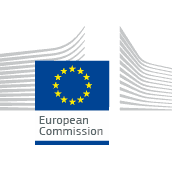
Research on reduction of C02 emissions in steel production
Deadline: Jul 9, 2019
CALL EXPIRED
CALL EXPIRED
Enterprise and Industry
Low-Carbon Technology
Low-Carbon Economy
Raw Materials
Industrial Manufacturing
Innovation & Research
Industrial Engineering
Pollution
Specific Challenge:
Identify and accelerate the deployment of breakthrough technology routes for almost zero CO2 steel production commercial demonstration by 2030 in Europe.
Scope:
Although the pilot project primarily addresses the steel sector, it should not limit its scope to this sector or to other energy intensive industries only. It should also look at technology solutions stemming from other sectors, identifying technology spill overs from non-related sectors. The pilot project will require close collaboration with relevant European think-tanks, technology and research centres, industrial associations, steel producers, private investors and civil society organisations, as well as with the European institutions (European Parliament, European Council and European Commission), national and regional public bodies.
The activities carried out by the pilot project must include:
1) Analysis and summary of promising technology routes, resulting from research projects globally (EU projects, national or regional funding, third country funding).
Prioritization of the most promising technology routes adjusted to the main steel plants in Europe[1], complemented by a technology roadmap describing the milestones, timing and value chains needed to produce clean steel in Europe[2].
Identification of decarbonisation pathways by 2030 and 2050 in consultation with industry and stakeholders to ensure private sector’s commitment. In addition, non-financial barriers to investments in low-carbon technologies have to be identified and analysed.
2) Identification of investments and of innovative funding mechanisms[3] needed to achieve the reductions specified at point (1).
3) Assessment of the impacts of technologies to be implemented, the optimal industrial sites and of the needed investments. The Assessment shall be structured in accordance with the EU Better Regulation guidelines[4].
The Assessment will include a cost-benefit analysis exploring the three following options: no use[5] of the European Coal and Steel Community (ECSC) assets, partial use of the ECSC assets and full use of these assets. In addition, the analysis has to assess if, how and why the EU should take action (including the costs of non-action).
4) Organization of two interactive workshops with external stakeholders and one large final public event to present and disseminate the project’s results.
[1][1] Covering at least 80% of emissions.
[2][2] The technology roadmap should build, among others, on the VUB/IES’ study ‘Industrial Value Chain: A bridge Towards a Carbon Neutral Europe’ (https://www.ies.be/node/4758) and the ‘Decarbonisation Pathways’ produced by Eurelectric (https://www.eurelectric.org/decarbonisation-pathways/). The technology roadmap should advance critical comments and further improvements of the studies developed insofar, focusing on those abovementioned.
[3][3] This also includes exploring synergy of EU funding programmes (as the Research Fund for Coal and Steel (RFCS), the assets of the European Coal and Steel Community i.L (ECSC), Horizon Europe, the EU Innovation Fund, the Fuel Cells and Hydrogen Joint Undertaking, the Bio-Based Industries Joint Undertaking, EU Invest).
[4][4] See, for example, “Better Regulation: guidelines and toolbox”: https://ec.europa.eu/info/law/law-making-process/planning-and-proposing-law/better-regulation-why-and-how/better-regulation-guidelines-and-toolbox_en .
The Impact Assessment has the main aim to gather evidence in order to support policy-making. In so doing, it verifies the existence of a possible problem and its scale, analysing its causes and consequences. Thereafter, it sets the objectives to be achieved. It also identifies and consults all the affected actors. Finally, it presents solutions and multiple options to achieve the set objectives, comparing these options with regard to their effectiveness, efficiency, coherence, relevance and EU added value.
[5][5] In accordance with Art. 1 of Protocol 37 on the Financial Consequences of the Expiry of the ECSC Treaty and on the RFCS, the use of the assets of the ECSC are intended to finance ‘research in the sectors related to the coal and steel industry’.
Public link: Only for registered users
 EC - Research Fund for Coal & Steel (RFCS)
EC - Research Fund for Coal & Steel (RFCS)


Please Log In to See This Section